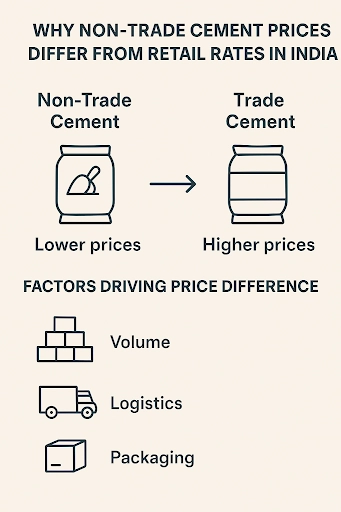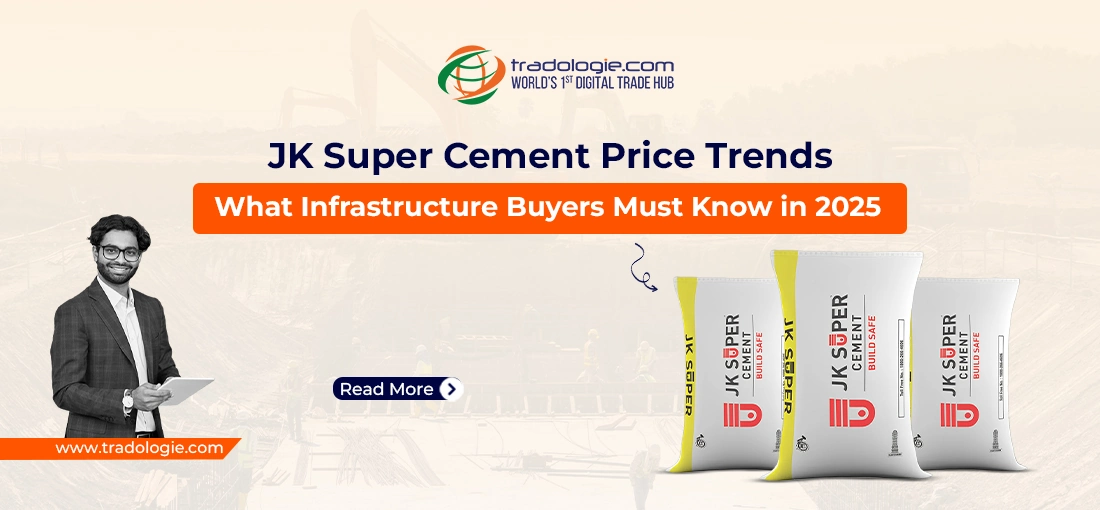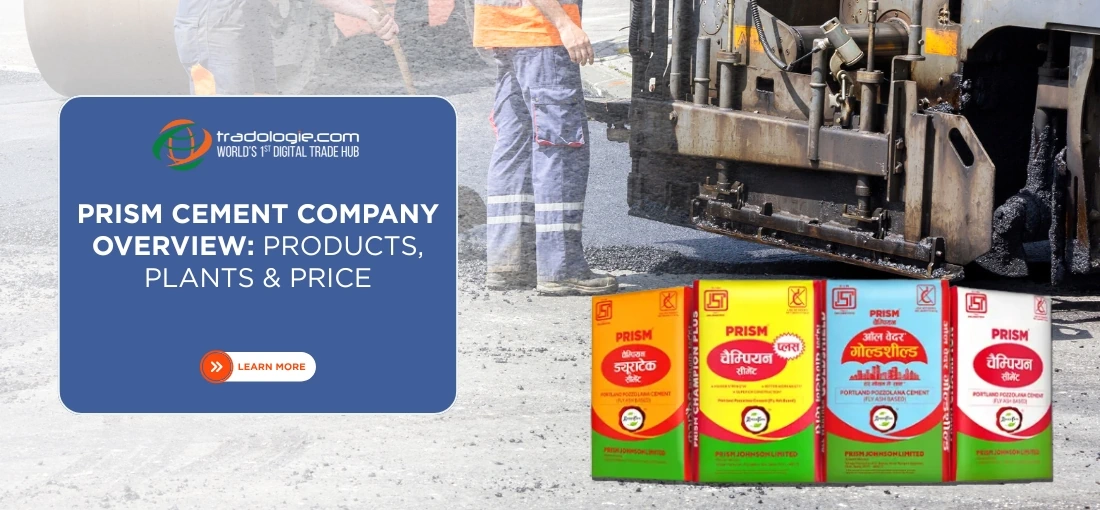Why Trade Cement Prices Differ from Non-Trade Cement Prices
Key Highlights:
- Non-Trade cement prices are lower due to bulk purchase discounts.
- Retail cement includes additional costs from dealers and transport.
- Volume, logistics, and packaging differences drive price variations.
- Contractors benefit from non-trade pricing with cost savings and reliable supply.
- Digital B2B platforms simplify direct bulk cement procurement for buyers.
Introduction
Cement is a key material in India's construction and infrastructure sector, used for building homes, offices, and large projects. Buyers often notice that cement prices differ depending on whether they buy in bulk or through the regular retail stores.
Understanding the difference between non-trade and trade cement prices is important for contractors, distributors, bulk buyers, and large construction companies. It helps save money, plan better, avoid delays, manage projects efficiently, and make informed purchasing decisions without affecting the quality or the delivery duration.
Trade vs Non-Trade Cement
Non Trade Cement Prices: Non-Trade cement is meant for verified contractors, bulk buyers, and institutions. Non Trade Cement Prices are usually lower because manufacturers sell directly to large buyers, avoiding the need of any middlemen.
Bulk orders often get discounts and better rates per bag. Non-Trade buyers also benefit from negotiated prices, priority delivery, and flexible quantities suited to their projects.
Trade Cement Prices: Retail or trade Cement is what small buyers or individual customers pay. Prices include extra costs like dealer margins, multiple distribution layers, handling charges etc
This means retail buyers pay more per bag even when the brand and quality are the same as non-trade cement.

Factors Driving the Price Difference
Several factors contribute to the gap between trade and non-trade cement rates:
- Volume Discounts: Bulk buyers buy hundreds or thousands of bags at once. Manufacturers give them a discount, usually 5-15%. Small buyers don't get these discounts.
- Logistics and Delivery Costs: Non-trade cement usually goes straight from the factory to the buyer's site or warehouse. Retail cement goes through wholesalers and dealers, adding extra transport and handling costs.
- Middlemen Margins: Retail cement passes through several middlemen, each adding profit. Non-Trade buyers skip these layers, resulting in low payment to the cement company.
- GST and Taxes: GST is the same for non-trade and retail cement, but retail prices are higher because of extra charges such as dealer fees, transport charges etc.
- Packaging and Branding: Non-Trade cement is sold in bulk sacks or large quantities, which results in low packaging cost per bag. Retail buyers pay more for branded, smaller packs, even when the cement quality is the same.
Advantages of Buying Cement at Non-Trade Prices
For contractors and bulk buyers, sourcing cement at non-trade prices brings several benefits:
- Cost Savings: Lower per-bag pricing significantly reduces total project expenditure, especially for large-scale construction projects. For example, a builder purchasing 5,000 bags of OPC 53 grade cement at non-trade rates can save over ₹2 lakh compared to retail prices.
- Reliable Supply: Direct procurement from manufacturers ensures consistent supply and timely delivery, minimizing project delays.
- Negotiated Terms: Bulk buyers can negotiate for specific quantities, preferred brands, and even customized delivery schedules. Digital platforms such as Tradologie offer online and secure tools for trading agro-commodities.
- Simplified Documentation: Non-Trade purchases often involve simplified billing and documentation, which is crucial for accounting and overall management of the project.
Market Dynamics Affecting Price Differences
Several external factors also influence how non-trade and trade (retail) cement prices diverge:
- Regional Demand Variations: Areas with high construction activity often experience higher retail pricing due to local demand pressures, whereas non-trade buyers in the same region may find their cement-order at lower factory rates.
- Seasonal Peaks: Monsoon and peak construction seasons can affect both non-trade and retail prices, though non-trade buyers often receive priority access at more stable rates. For example, bulk buyers in Uttar Pradesh can secure non-trade cement at steady rates during peak monsoon months, while retail cement prices in the same period often rise.
- Raw Material Costs: Cement production depends on raw materials like clinker, gypsum, and coal. Fluctuations in these costs can impact factory prices, which eventually reflect in non-trade and retail rates.
Conclusion
The difference between non-trade and trade cement cement (retail) prices mainly comes from order size, delivery routes, and extra retail charges. Retail cement buyers often pay more for convenience, packaging, and middleman margins, while non-trade cement buyers save money because of the direct purchases, lower costs, and better delivery terms.
For bulk cement buyers , contractors, and construction companies, knowing this difference is key for sourcing. Buying through non-trade channels (cement companies) helps reduce project costs, ensures on-time site delivery, and keeps product quality consistent.
Digital B2B Platforms like Tradologie make this process easier by letting bulk buyers place orders directly. This makes cement buying more reliable and smooth.





.webp)